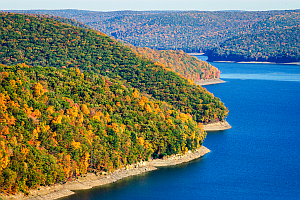Project Summary

In 2009, pursuant to the Pennsylvania Climate Change Act, the Pennsylvania Department of Environmental Protection developed a “Pennsylvania Climate Impact Assessment.” This report identified the climate risks to maintaining the health of freshwater ecosystems among several other climate vulnerabilities.
The report identified that warmer air temperatures and the associated increase of stream waters may reduce the ability for certain aquatic species to survive. This is supported by the U.S Environmental Protection Agency's National Water Program's Climate and Water Strategy which identifies cold water fisheries as particularly susceptible to climate change and associated changes in water temperature.
The Climate Impact Assessment specifically suggested that: “Pennsylvania may see a decline in some of our most valued coldwater communities… Of special concern is the impact of higher temperatures and altered flow regimes on Eastern Brook Trout, not only because of its status as a recreationally and culturally important species, but because it is an indicator of high water quality and may be an early victim of deleterious impacts of climate change.”
Pennsylvania, in recognition of the cultural, environmental and economic importance of cold-water fisheries to the state, and the vulnerability of possible transformation of cold water fisheries to warm water fisheries, identified the need to cover freshwater stream health within their Climate Change Adaptation Report. Pennsylvania, in recognition of the need to adapt to the changing climate and protect cold-water fisheries and freshwater ecosystems, outlined specific adaptation strategies for state agencies within their Climate Adaptation Planning Report.
These strategies, if implemented, can help Pennsylvania adapt to future climate changes for freshwater ecosystems, and will provide benefits to coldwater fisheries and stream health regardless of whether future climate impacts meet or exceed current projections.


